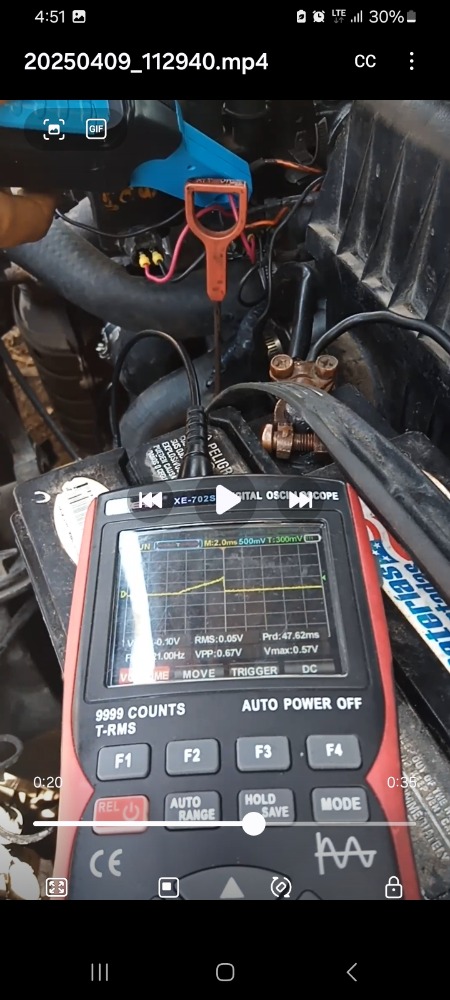Strange Ignition Coil Current Behavior – Possibly a Faulty ECU Driver from a Rebuilt Computer
Hi everyone, I wanted to share a very unusual case I recently diagnosed, in case it helps someone else down the road. The vehicle is a Hyundai Accent, using a waste spark ignition system. One coil pair consistently showed a very weak spark, even after replacing both coils with new ones. Here’s what I found: Using an amp clamp connected to my oscilloscope, I observed that the coil with the weak spark was drawing almost 10 amps. The other coil (working fine) was drawing about 5 amps. Both ignition signals had the same dwell time – around 5 ms. I swapped the coils multiple times, and the problem always remained on the same connector – not the coil itself. This pointed to a control-side issue, not a component issue. What really stood out was that the coil drawing more current was producing a weaker spark. I tested spark strength with both plug wires disconnected (since it’s a waste spark system), so it wasn't a plug or wire issue either. At this point, I can’t say with certainty what the internal failure is, but I suspect that the excessive current may be causing early magnetic saturation in the coil, reducing the energy transfer to the secondary side. This is just a hypothesis, not something I can confirm for sure, but it could explain why more current results in a weaker spark in this case. Another important detail: the ECU in this car was purchased by the client from a company that sells repaired ECUs, which makes me think it may have been rebuilt with an incorrect or low-quality ignition driver. That would explain the abnormal current behavior and the possible internal current limiting I observed on the scope. In the captures: The good channel shows a clean current ramp and release. The faulty channel shows a sharp rise and then a plateau at 10 amps – like it's hitting a current limit too early. This case stood out because we often expect weak spark to mean low current, but here, it was excessive current causing the issue – or at least, that's what the data suggests. Let me know your thoughts, and I’ll attach scope captures soon. Thanks for reading!




